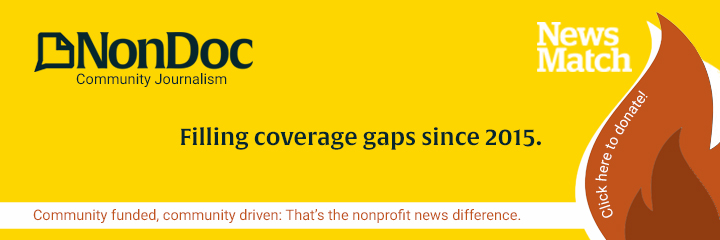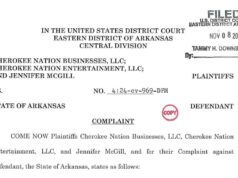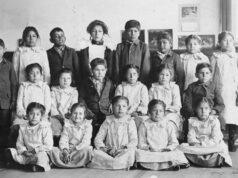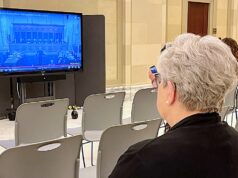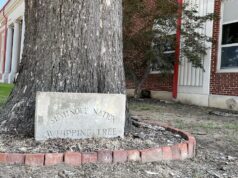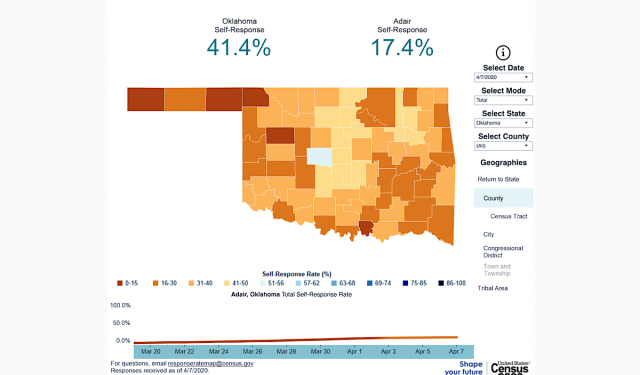
Forty-one percent of households in Oklahoma have completed the nation’s first primarily digital census with one-third of surveys completed online since the count for the 2020 Census began.
However, that percentage puts Oklahoma toward the bottom of national response rankings. Currently, Oklahoma is ranked 42nd in the country, one spot behind Texas and one spot ahead of New York.
This story was reported by Gaylord News, a Washington reporting project of the Gaylord College of Journalism and Mass Communication at the University of Oklahoma.
Canadian and Cleveland counties have both recorded just over a 50 percent response rate, the highest in the state. But only about 11 percent of the households in Beaver and Harper counties have completed their forms, and only 6.5 percent of Cimarron County households have completed theirs.
Despite the impact of the coronavirus pandemic on census efforts, Josh McGoldrick is encouraged.
“Our response rate, so far, looks like it’s trending a little better than in 2010,” said McGoldrick, chief of staff and general counsel for the Oklahoma Department of Commerce, which is working with the U.S. Census Bureau to increase the state’s response rate in the 2020 census.
“People seem to be happy with filling it out online,” McGoldrick said. “The only issues we’ve had, at least in Oklahoma, is we have a lot of rural areas that do not necessarily have good broadband access. It may be harder for them to do the online census, but obviously you can always fill out a paper copy.”
In addition to internet access problems, the 2020 census faces issues with an overall lack of trust in the government.
“Some people just do not trust the government, and again we try to reassure the importance of the census because with every person that does not fill it out, the state loses roughly $1,675 in (federal) funding per year,” McGoldrick said.
Responses key for tribal nations
Much like states missing out on money due to residents not completing the census, tribal nations also miss out on money in the form of grants if their citizens are not counted.
Native Americans were undercounted by nearly 5 percent nationwide in the 2010 Census.
Nearly 80 percent of the Choctaw Nation in Oklahoma were missed due to differences in the way members’ tribal affiliation was recorded.
Some 159,630 respondents said they were “Choctaw,” while 24,000 others said “Choctaw Nation of Oklahoma.”
Choctaw Chief Gary Batton said the lower number was used to determine the money the tribe received from grants.
“What hurt our tribe in particular, was being one of three federally recognized tribes to go by Choctaw,” said Melissa Landers, senior director of membership services and head of the complete count committee for the Choctaw Nation. “We learned after the fact that unless our members had actually specifically written in Choctaw Nation of Oklahoma, we didn’t get counted. That was obviously devastating.”
McGoldrick said he worked with multiple tribes to get their citizens active.
“I worked with the Choctaws quite a bit and I know they have done a tremendous job trying to get their citizens mobilized in 2020,” McGoldrick said. “We have also been working with several other tribes including the Chickasaw and Muscogee (Creek) Nation, and I know almost every tribe had a coordinated census effort.”
By this point in a typical census year, census workers would have started going door to door to conduct surveys and collect information from citizens yet to turn in their responses.
However, the U.S. Census Bureau has delayed nonresponse checkups until May and has extended the online self response deadline in light of the pandemic.
“In response to the COVID-19 outbreak, the Census Bureau is extending the self-response phase by two weeks until Aug. 14. Additionally, other phases are being extended two to four weeks,” said Kirk Martin, director of performance and accountability for the Oklahoma Department of Commerce.
Cities and universities across the state have been pushing to make sure everyone is counted.
“The City of Oklahoma City was working with partners to do a lot of face-to-face outreach, up until COVID-19 hit,” said Kristy Yager, of the Oklahoma City public information office. “Since then we had to certainly make many changes in our plans, we’ve been putting more into advertising on the radio and in newspapers instead of outreach.
“It certainly was not the way we wanted to go as we know many people need one-on-one conversation to better understand why it is important to take the census.”
McGoldrick said the state’s efforts to promote the census have also been hindered by social distancing requirements that have closed some places like libraries where citizens used to obtain information about the census.
But, he said, it is necessary to keep the future in mind as data from the 2020 census will be utilized for the next 10 years.
“I just encourage everyone to take some time to make sure to fill out the census because times like now when we’re talking about who has medical supplies and things of that nature, a lot of those decisions are based on the census,” McGoldrick said. “Times like now really highlight how important it is to make sure we’re counted so people know we’re here and if there’s need for federal resources we can have an accurate count.”
City by city, county by county response rates and state by state response rates are obtainable on interactive maps that can be found here.








